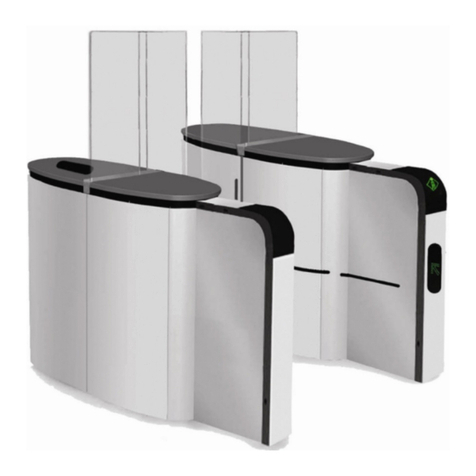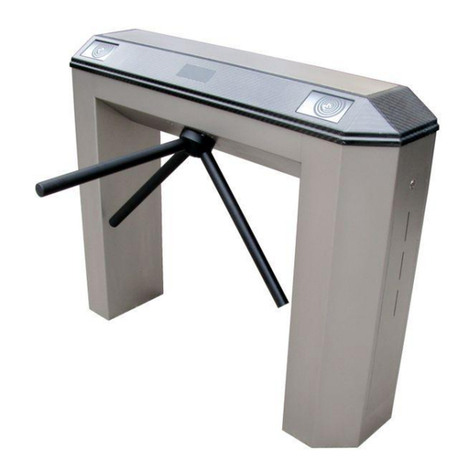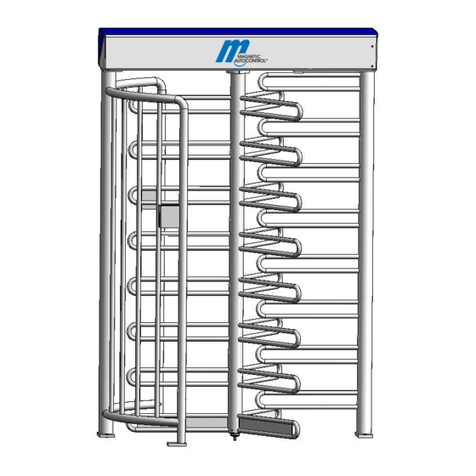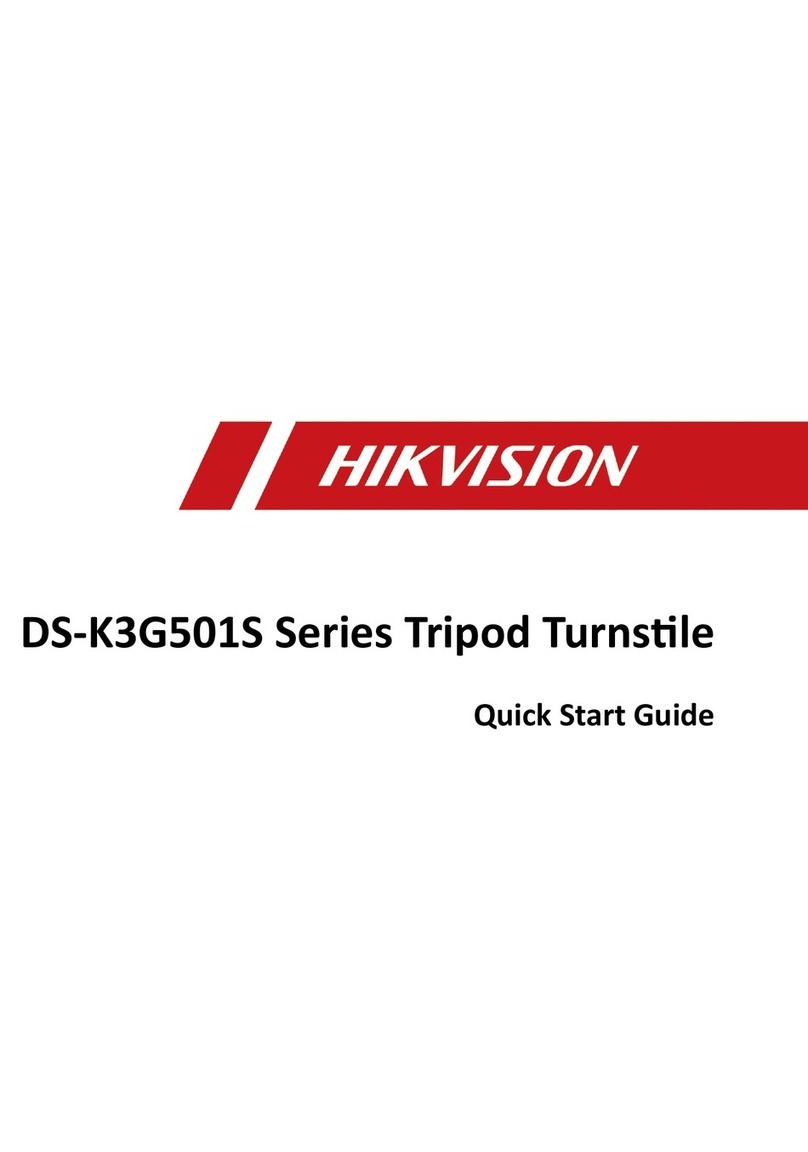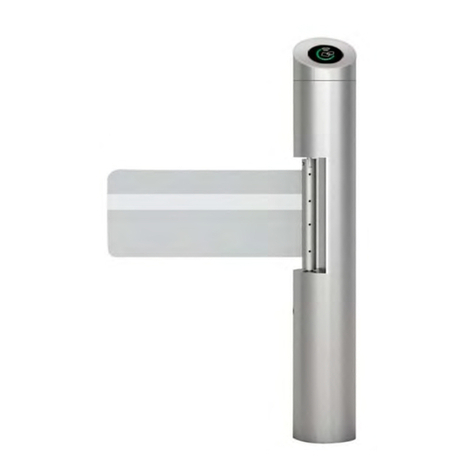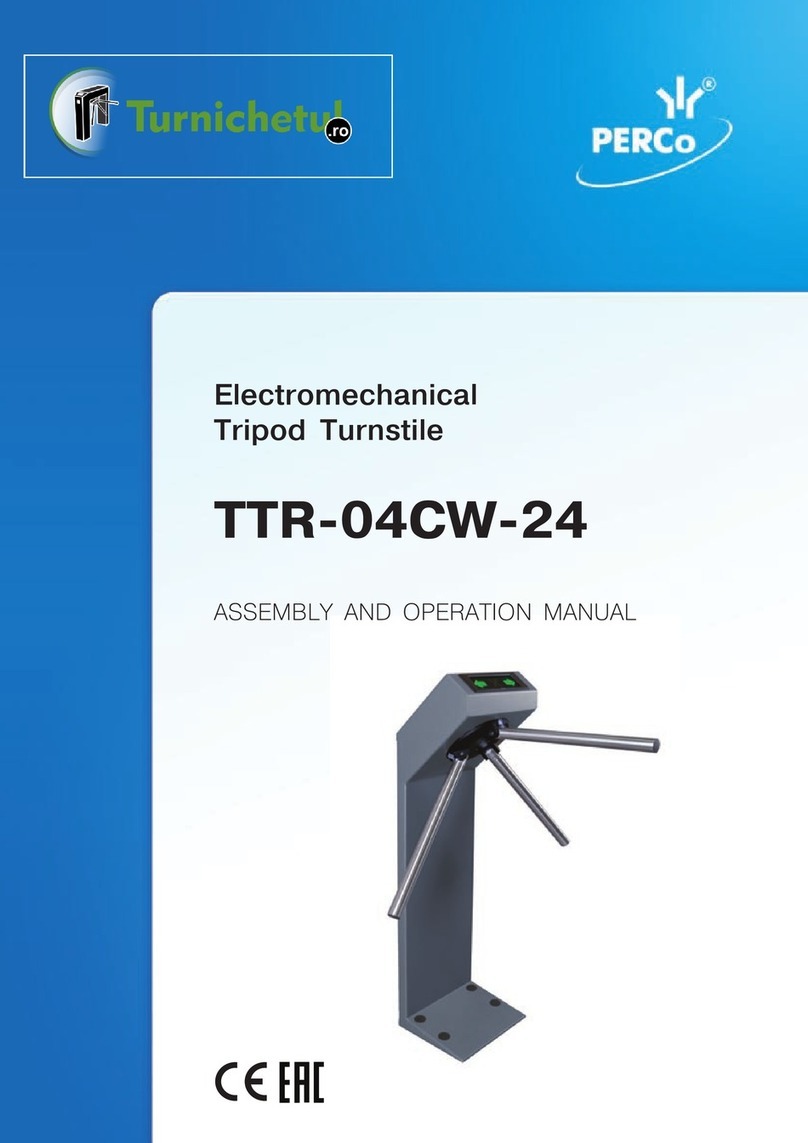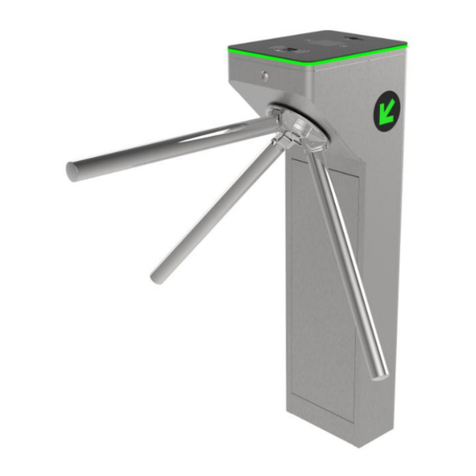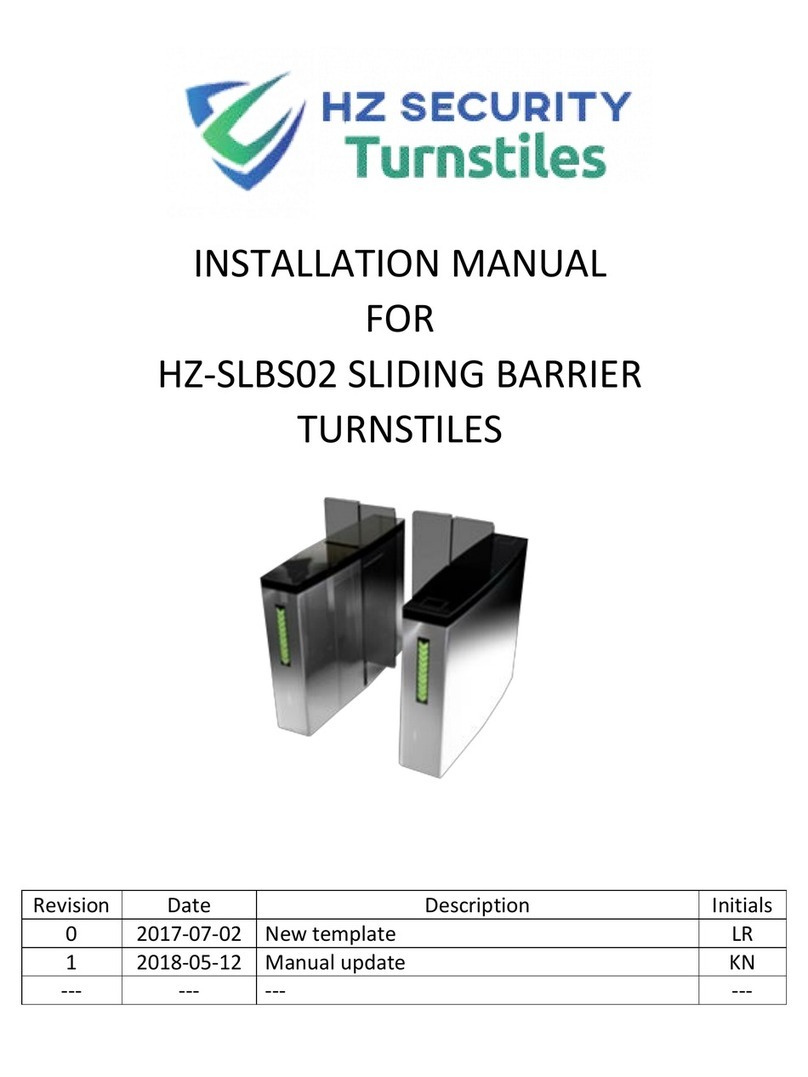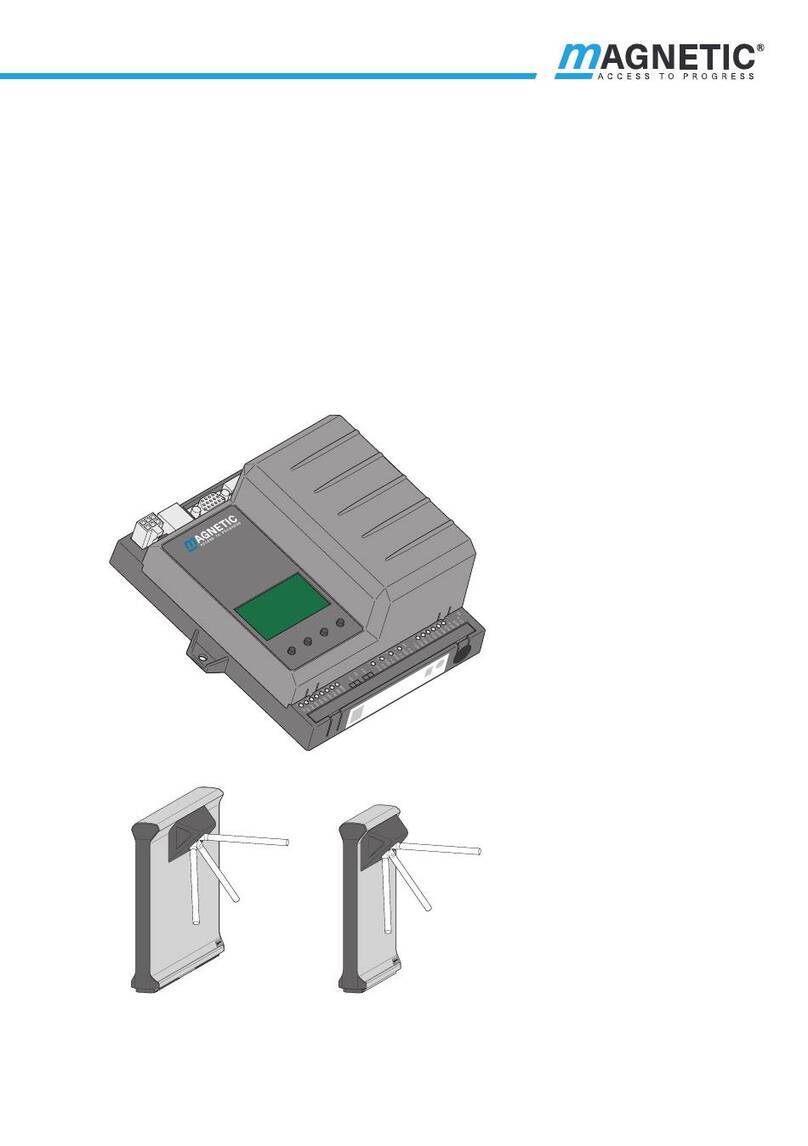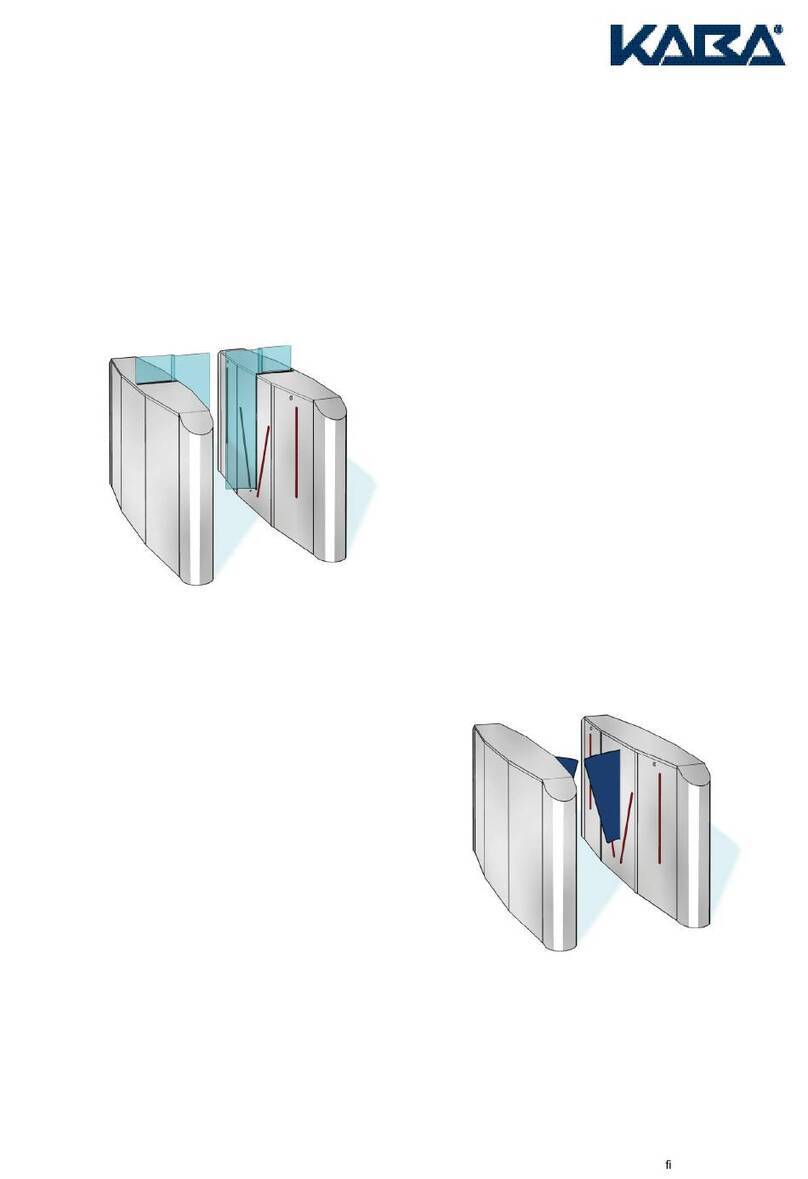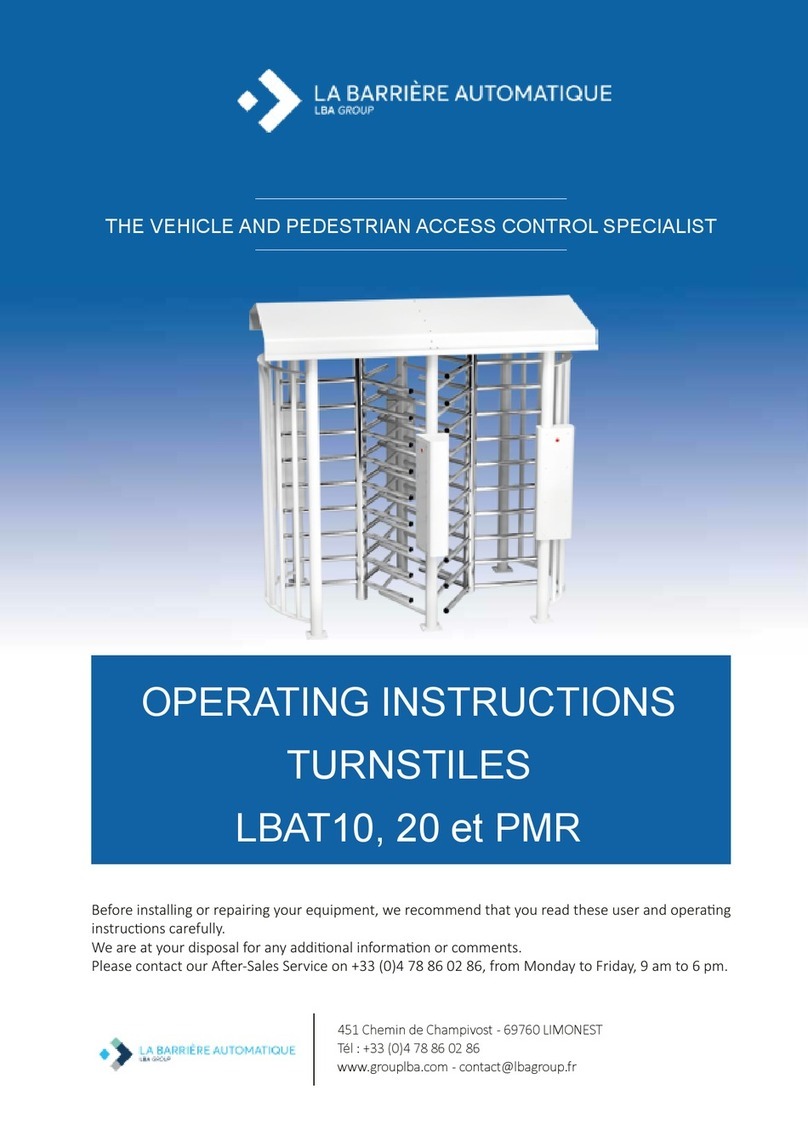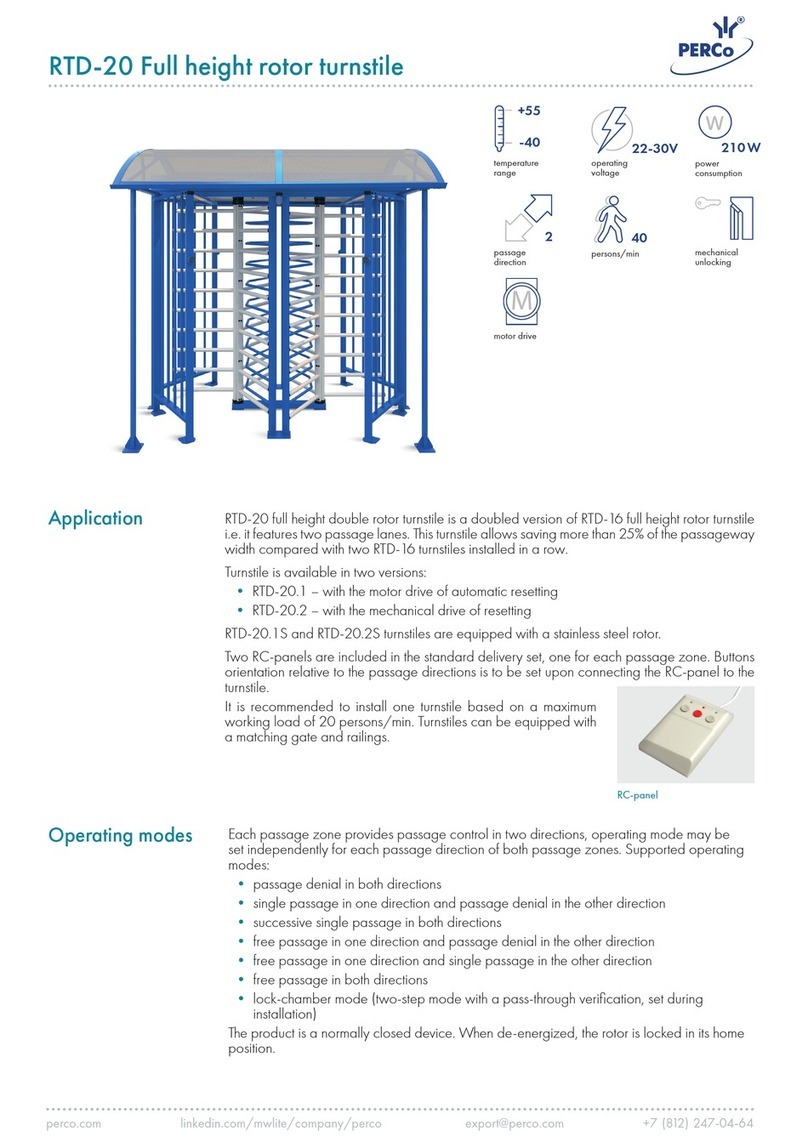
CENTRALE DI COMANDO CP.RT
Centrale di comando per il controllo di passaggi pedonali, tramite tornelli o tripodi.
FUNZIONI INGRESSI/USCITE (FIG.12)
SA.24V
Morsetti Funzione Descrizione
L-N-GND Alimentazione Ingresso alimentazione di rete 100÷250Vac 50/60Hz
+ - Uscita 24Vdc Uscita 24 Vdc alimentazione centrale di comando CP.RT
+BAT- Batterie Ingresso Morsetto per il collegamento delle batterie tampone (accessorio)
CP.RT
Morsetti Funzione Descrizione
OUT A Abilita rotazione in direzione A
Uscita collegamento 24V per magnete di direzione A.
Alimentando il magnete A viene consentita la rotazione in senso ORARIO (vista dall’alto) del tornello.
OUT B Abilita rotazione in direzione B
Uscita collegamento 24V per magnete di direzione B.
Alimentando il magnete B viene consentita la rotazione in senso ANTI-ORARIO (vista dall’al-
to) del tornello.
TLIGHT A Luce semaforo A Controllo luce semaforica a LED 24V.
TLIGHT B Luce semaforo B Controllo luce semaforica a LED 24V.
POWER Alimentazione 24 Ingresso alimentazione 24V dalla scheda, rispettare le polarità
Encoder Connettore Encoder Ingresso connettore rapido per il collegamento dell’Encoder Motore
MODE A Ingresso A
Morsetto 4 poli per il comando dell’uscita A:
START: contatto NO per abilitare il magnete uscita A, la chiusura del contatto da il consenso
ad una rotazione in direzione A. Può essere utilizzato un pulsante NO, il contatto NO di un
lettore tessere, o di una pulsantiera digitale, ecc.
STOP: contatto NO per pulsante di blocco, la chiusura del contatto blocca la rotazione in
direzione A impedendo qualsiasi passaggio fino al suo rilascio.
FREE Pass: contatto NO per pulsante di sblocco, la chiusura del contatto libera la rotazione
in direzione A.
COM (GND): Comune degli ingressi di comando
MODE B Ingresso B Stesse funzioni dell’Ingresso MODE A ma riferite all’uscita B
SW1
Joystick di controllo
UP
RL
DOWN
Consente di navigare tra i menu di programmazione e impostare i valori di funzionamento.
Direzione UP: Incrementa valore parametro
Direzione DOWN: Decrementa valore parametro
Direzione R: Menu successivo
Direzione L: Menu precedente
Quando il display lo richiede premere il pulsante del Joystick
RESET Riavvia la centrale
INFORMAZIONI PRELIMINARI
La centrale CP.RT controlla entrambe le direzioni di passaggio attraverso il varco.
Considerate il tornello visto dall’alto:
Nella Figura 13 il pedone si muove nella direzione indicata, il tornello per consentirne il passaggio deve ruotare in senso ORARIO, questo senso di rota-
zione è controllato dal magnete A e dai relativi ingressi.
Nella Figura 14 il pedone si muove nella direzione indicata, il tornello per consentirne il passaggio deve ruotare in senso ANTI-ORARIO, questo senso di
rotazione è controllato dal magnete B e dai relativi ingressi.
E’ possibile collegare una luce semaforica di segnalazione che indica la possibilità di passaggio del varco.
I tornelli possono essere a 3 o 4 braccia:
- Nel caso di tornello a 3 braccia impostare nel menu 5 una rotazione di 120°
- Nel caso di tornello a 4 braccia impostare nel menu 5 una rotazione di 90°
PROGRAMMAZIONE
Quando si da alimentazione alla centrale, sul display LCD compaiono il nome del costruttore, la versione del firmware e la scritta “PUSH TO SETUP”.
Solo alla prima accensione, il primo menu visualizzato è il menu 5 di configurazione tipo tornello.
Premendo il pulsante del Joystick si accedono ai seguenti menu:
1 PUSH TO SET C
Verificare che il tornello sia in una posizione di stop, quindi premere il Joystick per assegnare la posizione di “zero” all’encoder.
2 TOUT CrdRd Imposta il valore di timeout di passaggio. Trascorso il tempo impostato il magnete viene disalimentato inibendo il passaggio.
Il valore minimo è 1 secondo, il valore massimo 25, il valore di default è 6 secondi.
3 Light Non utilizzato
4 C.R.T Light
Imposta la logica di funzionamento della luce semaforica associata alle uscite A/B.
RED: I semafori sono sempre Rossi, quando una direzione viene abilitata il suo semaforo commuta in verde.
GRN: I semafori sono sempre Verdi, quando una direzione viene abilitata il semaforo opposto commuta in rosso.
Il valore di default è RED
5 Mec. Type
Imposta il tipo di tornello/tripode.
120 dg va utilizzato con i tornelli a 3 braccia.
90 dg va utilizzato con i tornelli a 4 braccia.
Selezionare il tipo di tornello utilizzato.
MESSAGGI DI ERRORE
Errore connessione encoder
L’encoder motore non risulta connesso alla centrale verificare i cablaggi nella centrale e sul motore
Errore encoder L’encoder è connesso ma non funziona correttamente
verificare il corretto montaggio del magnete e della scheda encoder
ITA
